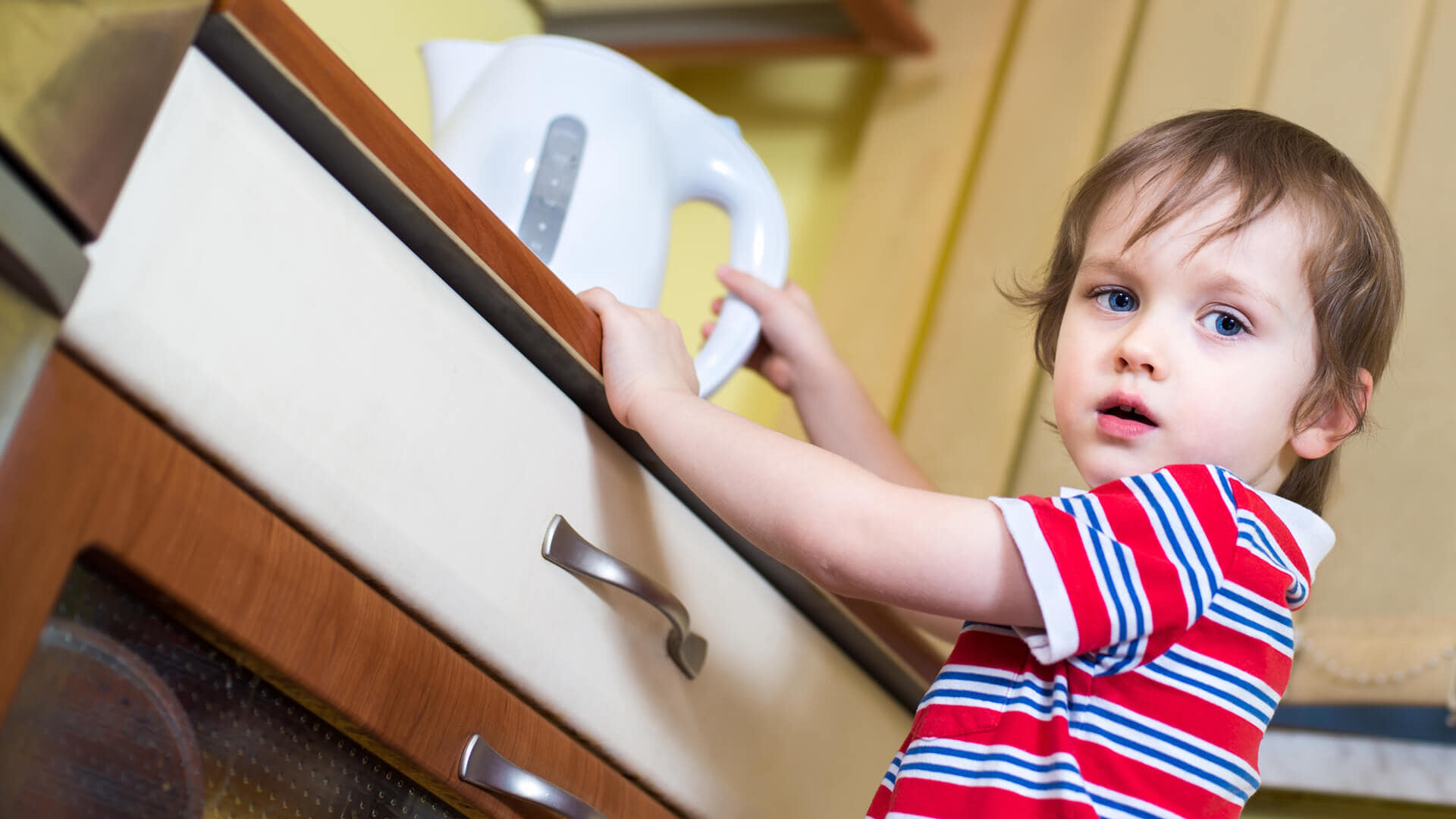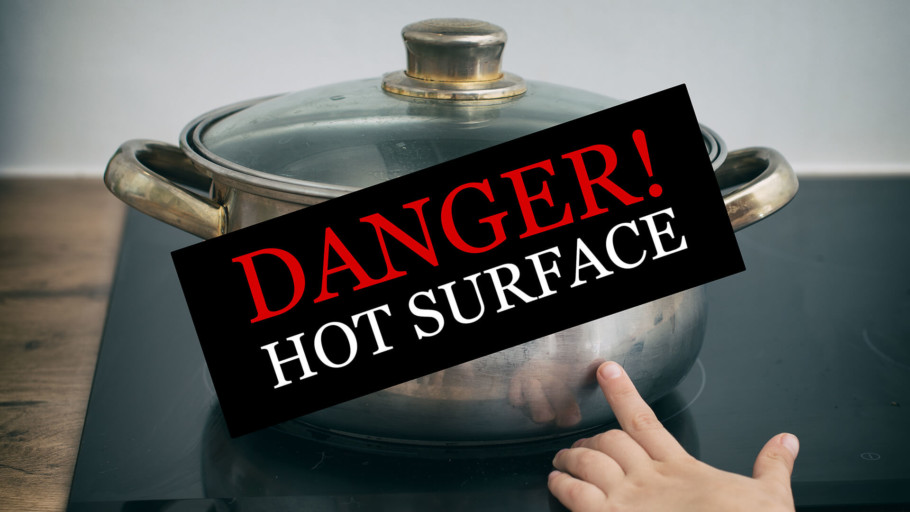Common Kitchen Appliance Hazards (And How to Avoid Them)
The kitchen is considered to be the most dangerous room in the house. There is heat, fire, water, and above all, electricity to contend with, so it comes as no surprise to learn that, according to the Beaumont Emergency Center, two-thirds of fires in the home start in the kitchen.
The good news, however, is that this risk is manageable with careful planning and knowledge of the appliance you are using. There are many things you can do to prevent you or your loved ones becoming a terrible statistic, which is why in this article we decided to put common kitchen appliance hazards in the spotlight and give you advice on how to avoid them.
In essence, we believe that the most common dangers can be broken down into three categories:
| TYPE OF DANGER | TYPE OF APPLIANCE | CAUSES OF DANGER |
| Fire |
|
|
| Water |
|
|
| Electrical |
|
|
Let’s look at each category in more detail to examine how hazards occur and what can be done to prevent them.
Fire
Cookers and grills
The oven and grill are the most common areas where open flames occur, so it stands to reason that this is the area where the danger of fire is at its most heightened. Hazards can happen due to several reasons: spitting fat, small children unsupervised near the stove, curious pets left unattended, and a lack of concentration on your part.
There is also the potential that the flame might go out, flooding your kitchen with noxious gas. Gas is odorless, so for the utility companies to help make it obvious when there is a leak, they add a smell for easy detection. It’s also worth remembering that the front of the oven will get hot, so having small children crawling around nearby is bad for their safety, as they may place their hands on the hot glass.
Distractions are commonplace, especially as you often have demands on your time and attention, so when you are in the kitchen it is doubly essential that you remain focused on the tasks at hand.
| Appliance | Ways to avoid hazards |
| Cookers and grills |
|

Deep fryers
Oil is highly flammable, difficult to control when aflame, and sticks to the skin and continues to burn. Stovetop fryers pose significant risks if not used correctly. When working with hot fat, you should always use a deep fryer with a sealed lid to prevent spillage. If you opt for the electrical variety, you can set the temperature to prevent overheating of the oil.
Even if you are mindful of the temperature, you’ll also need to remember that hot grease and fat are extremely dangerous if you have children in the cooking area. A small hand reaching for the pot is not a scenario you want to contemplate, so take the appropriate measures to prevent such accidents.
The types of oil you choose to cook with could make a difference in safety too, with each variety having a higher or lower burning point, which is the temperature at which the oil starts to smoke and give off a burning smell. Corn oil has a smoke point of 320 degrees Fahrenheit, and avocado oil can withstand temperatures up to 520 degrees Fahrenheit. At the other end of the spectrum, flaxseed oil burns at just 225 degrees Fahrenheit.
You’ll also want to keep in mind the frequency with which you refresh the oil in your fryer. Reheating old cooking oil releases carcinogens that can cause nasty side effects and can pose a toxic health risk to you and your family.
| Appliance | Ways to avoid hazards |
| Deep fryers |
|
Cooker ducts
Cooker ducts and hoods are prone to collecting dust, grease, and fat that rises from pans as vapor during the cooking process. If you want to know how dirty your ducts are, just reach up inside and feel. If the surface is coated in grease, then it is undoubtedly time to schedule a clean. If you don’t keep on top of it you are exposing oil and fat to naked flames, which is a perfect recipe for a kitchen fire.
Keeping on top of cleaning also depends on what type of hood you have. Some have filters that absorb the fat and need replacing at regular intervals. Don’t think that the risk diminishes with this type of filter; fat accumulates just the same, and if they aren’t changed regularly the fire risk is equally as high.
| Appliance | Ways to avoid hazards |
| Cooker ducts |
|
Water
Kettle
The average kettle may seem like an innocuous kitchen appliance, but when you are handling boiling water, nothing should be left to chance. Kettles should be safely placed away from anything else electrical, where the steam may cause a malfunction, and any trailing cords need to be neatly kept away from cooktop edges to avoid children yanking them. Hot oils are also volatile near vapor and can combust, so be careful when around the cooktop or deep fryers.
| Appliance | Ways to avoid hazards |
| Kettle |
|

Steamer
Steamers, as the name suggests, produce a large amount of steam, so much so that when you switch it on it is advisable that you place it near an open window to allow the heat and vapor to escape.
The obvious drawback with steamers is that they dramatically increase the moisture content in the kitchen, which could be hazardous when operating electrical equipment and when deep frying with oil. Moisture and hot fat are not a great combination. Steamers also emit extreme heat, so burns and scalds are common when mishandling them.
| Appliance | Ways to avoid danger |
| Steamer |
|
Pressure cookers
Pressure cookers, if used in accordance with the maker’s instructions, are entirely safe, however, that doesn’t mean that they don’t pose a risk if some careful guidelines are not observed. The extreme heat that pressure cookers create, coupled with the build-up of pressure that gives them their unique cooking method, makes them potential ticking bombs. The electrical varieties are safer to an extent, because they are timer controlled and thus don’t need the naked cooktop flame. Moreover, electric pressure cookers typically have better safety mechanisms in place to help avoid potential injuries.
| Appliance | Ways to avoid hazards |
| Pressure cooker |
|
Electrical
Microwave oven
Microwave ovens are firm favorites in the kitchen for the convenience they provide, but they should be respected. Just because you don’t have the presence of a naked flame doesn’t mean that microwaves are any less dangerous. These appliances use high wattage to achieve super-fast results, so making sure that vents are kept free from blockages and the interior is free from food debris is crucial if you want the microwave to continue to function safely. If you have an above-the-range model, make sure there is enough clearance between the range and the microwave.
You should also keep an eye on any unusual malfunction codes that might flash up, notably “F” codes, as these may be an indicator that something more serious is going on. “F” codes stand for failure, so if F2 appears, it indicates a thermal sensor failure, while F3 means that you have a shorting membrane keypad failure, which can be extremely dangerous.
| Appliance | Ways to avoid hazards |
| Microwave |
|

Blender
Blenders are very dangerous, mainly because the blades are razor-sharp. Even handling the blades can be dangerous, so make sure that you do so with extreme caution. Never insert a blade in a blender unless the unit is unplugged. The last thing you would want is for an accident to occur because you tried to cut corners. When you store the blades away, it would be a good idea to place them in a secure container with a lid, to ensure that children don’t accidentally get hold of them when you are distracted with other things.
| Appliance | Ways to avoid hazards |
| Blender |
|
Toaster
Toasters are part of our morning routine: everyday we pop the sliced bread in and press down on the lever to let this little appliance do its job. Inside, though, there are lots of elements that heat up to crisp and brown our bread.
Toasters also have a crumb tray that collects all those crispy bits that fall off the toast during the cooking process. To avoid any risk of a fire, it is worth emptying that tray regularly, as those crumbs soon accumulate and could catch fire. When the toast gets stuck, you might want to stick a metal knife inside and try and free the blockage, but you should never do this, as metal conducts electricity and thus you could put yourself in danger of an electric shock. Finally, never walk away from a toaster, because if the bread does become stuck it may not pop up and soon after combust.
| Appliance | Ways to avoid hazards |
| Toaster |
|
Clothes Dryer
Most of us never consider the dangers of clothes dryers when it comes to hazards, but according to the United States Fire Administration (USFA) almost 2,900 fires are reported each year as a result of clothes dryers, with an estimated five deaths annually. That equates to over 100 injuries and $35 million of property damage with an alarming 34 percent of incidents as a result of failing to clean the dryer properly.
As your clothes spin inside the dryer’s drum, thousands of fibers are collected in the lint tray. If the lint is not removed, it could be a recipe for disaster. In addition, making sure that the dryer is vented correctly could reduce the risk of overheating and fire. All it needs is one spark inside the machine to ignite the ultra-flammable lint, and the fire will take hold.
The other consideration is that children see the dryer, and the washing machine for that matter, as a place of fun and somewhere to hide. Always keep the door firmly shut to avoid small hands prying it open and climbing in.
| Appliance | Ways to avoid hazards |
| Clothes dryer |
|
Final Thoughts
Kitchen appliances are safe, and we would not want to discourage anyone from owning and using any of the items on the list, but we do urge you to treat them with care and attention. Accidents happen, no matter how hard you try to avoid them, but you can decrease your chances of falling victim to a hazard by following our simple advice.
For the most part, all you need to do is concentrate on the task at hand, avoid distractions, and never handle hot pans, electrical items, or kettles with wet hands. If you follow our advice, you should have a trouble-free experience, and you will also be taking the best steps towards protecting your loved ones too.

